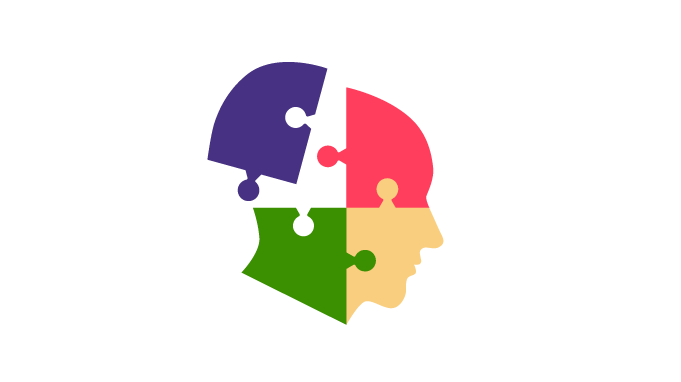11 Cognitive Behavioral Therapy Techniques For Employees At Work
Cognitive-behavioral therapy, commonly known as CBT, is the most familiar and widely used therapy by psychologists for mental health issues. Its goal is to identify and solve the behavioral problems of individuals.
If you've ever been to a therapy or counseling session, its unlikely that you've not participated in CBT. This therapy is based on simple practices that ensure successful outcomes.
What is CBT?
Cognitive-behavioral therapy is a psychotherapy that helps individuals change thought processes, beliefs, and attitudes that bring out irrational and harmful behaviors.
It encompasses the problem-specific and goal-oriented approach.
"Cognitive behavioral therapy (CBT) is a type of psychotherapeutic treatment that helps people learn how to identify and change destructive or disturbing thought patterns that have a negative influence on behavior and emotions."
This therapy helps people to reduce stress, depression, grief, or regret. It focuses on solving present-day challenges by providing simpler solutions to climb the ladder of success.
CBT offers a quick fix to change one's behavioral patterns, conscious and unconscious beliefs, including attitudes and thoughts causing severe problems.
It is a form of talk therapy that comprises evidence-based treatments.
For better outcomes or results, this therapy requires active and constant involvement of the individual.
What is the approach of Cognitive-behavioral therapy techniques?
CBT is a cognitive model. It is how cognition is conceptualized. Beck (1976) outlined three levels of understanding:
- Core beliefs
- Dysfunctional assumptions
- Negative automatic thoughts
Here is how the CBT techniques work:
- Help you to identify problems or issues in your regular life
- Make you aware of negative thinking and how they can impact your life
- Identifies unproductive thoughts and reshape it
- In a way, it helps you alter the way you sense certain situations
- Allows you to learn new behaviors and put them into practice
- And encourage them to think better, act better and stay well.
11 CBT Techniques for your employees' mental health
Here are the techniques and tools that might help your employees at work:
1. Cognitive Restructuring

When you discover a destructive or harmful belief, you start to challenge it. Cognitive restructuring identifies those distortions that hold you back. Then, it helps to explore how those distortion patterns are rooted in finding new ways to solve them.
It also involves unlearning the dysfunctional thought patterns and discovering more rational ways of understanding them. Cognitive restructuring helps you track down your thoughts and look into intellectual wellness activities to improve your quality of thoughts.
It also includes the following aspects like:
- Tracking behaviors during difficult situations
- Identifying the cause of trouble or disruptive thoughts
- Engaging in behavioral experiments to test out whether your beliefs are true.
- Also, it helps discover alternative perspectives.
It is an easy technique that HR can encourage employees to take up. Undergoing cognitive restructuring will assist employees in marking up their difficulties and perform better on the job.
2. Graded Exposure Technique

The graded exposure technique helps people understand what causes fear, which makes them avoid certain situations.
Fear and anxiety in most workplaces are the cause of lower esteem, productivity, and retention.
Through systematic exposure, it helps employees overcome such situations by tackling those fears. It is one of the most effective psychological treatments that exist with a 90% of effectiveness rate.
This technique seems complicated, but it's simple. It involves listing situations that you usually avoid—for example, someone with severe social anxiety disorder, leading to absenteeism at work.
Graded exposure helps you to rate the situations of anxiety. And rank them according to the distress rating. This technique will enable employees to recognize the most significant cause of distress and sort them.
3. Journaling

Journaling is an excellent way of assembling memories.
Journals open the portal for people to explore all kinds of feelings and thoughts.
Journaling in CBT is associated with brainstorming.
It involves writing the time of the thought, their sources, the extent or intensity, and how we react, among all other factors.
Journaling helps individuals to identify their thoughts and emotions and describe and change them for good.
This CBT technique locates and understands the cause of negative thoughts. It helps to counteract those negative patterns of thoughts that hamper your well-being.
HR can boost employees' mental health by encouraging them to adopt this method. They can also provide journals to every employee with a simple message: "we care".
4. Mindfulness Meditation

Practicing meditation improves concentration and infuses perfection into the mind. It is a unique CBT technique to heal the mind and relax.
Mindfulness meditation is an ancient Buddhist technique to guide the mind against all odds. It allows you to be present at the moment.
These techniques involve breathing practices to calm the mind. As a result, it helps to reduce stress, anxiety and improve retention at work. At the same time, it counterbalances those challenges that include overthinking and distractions at work.
Practicing mindfulness meditation prompts improvements to leadership trust indices and employee engagement. It also significantly upskills behavioral health and mental health.
Every organization must motivate its employees to practice mindfulness to create a positive work culture.
Also Read: Mindfulness Meditation: Why To Practice At Work?
5. Cognitive Distortions

Cognitive distortions are like habitual errors in thinking. They involve thoughts like "I am not good enough," "People hate me." It is a common problem these days. Some distortions levy mental health and increase the level of stress, anxiety, or depression.
Cognitive-behavioral therapy (CBT) identifies cognitive distortions to treat them effectively. But, unfortunately, these distorted thinking patterns affect health and wellness, which can also lead to substance abuse.
Cognitive Distortions includes issues like:
- Polarized thinking, or black-white thinking
- Overthinking and overgeneralizing
- Jumping to conclusions
- Magnifying problems
- Fallacious thinking
- Counting more on negative thoughts
- Blaming and mislabeling
- More dependency on emotional reasoning, etc
HR can help employees to get over distortions by creating a positive work environment. They can also provide free online or offline counseling to employees.
6. Exposure Tool

The exposure tool accumulates three different techniques.
The exposure tool includes:
- Interactive and nightmare technique
- Rescripting technique
- Response prevention technique
It basically treats anxiety and helps those who are suffering from nightmares. In addition, it enables you to overcome specific behavioral and thought patterns.
Exposure and response prevention techniques treat those who suffer from obsessive-compulsive disorders, commonly known as OCD.
Organizations can help their employees by encouraging them to take part in various activities. It can involve both indoor and outdoor fun activities.
Creating a friendly workplace is the best remedy for employees suffering from such patterns of thoughts and behaviors.
7. Role-Playing

Role-playing encourages employees to adopt positive behaviors to potentially tricky situations.
Role-play can be used to support your employees in modifying their core beliefs, discover automatic thoughts, practice new responses, etc.
It treats dysfunctional and maladaptive behavioral patterns that hold them back.
Role-play can lessen fear and can also help to:
- Improve problem-solving skills
- Gain confidence in certain situations
- Practice better social skills
- Assertiveness training
- Improve communication skills
- Gain familiarity with situations
8. Mood Tracking

Mood-tracking promotes self-regulation that assists one to stay emotionally healthy. Tracking your mood over time can say how well you're doing by managing your mood.
It's a primary indicator of how well you're performing to achieve your goals.
How is it done?
A mood tracker can be on a page in your planner or bullet journal. It allows you to track your feelings like happiness, sadness, anger, etc.
You can create a monthly mood tracker by jotting down the days of the month. And, add a color key with the moods you want to track and fill it every day.
Each day, choose the mood color that has dominated your day. Also, use the same color to fill in the box of the corresponding day.
Organizations can also encourage their employees to track their moods through the Vantage fit app.
9. Positive Thinking

A positive attitude only comes with positive thinking. Positive thinking aids in innovation, creativity, retention, productivity, etc. It highly contributes to employees' performances at work.
A happy and healthy work environment can only be created by encouraging positivity at work.
Here are benefits that acknowledge positive thinking at:
- Improves relationship at work
- Improves focus
- Improves productivity
- Reduce absenteeism
- Promotes a healthier and happier workplace
- Improves intellectual wellness
- Improve psychological health
- Improve behavioral health
- Improve decision making
- Positive thinking reduces stress, depression, and anxiety
HR can also create a visually positive work environment with mindfulness quotes, etc.
Also Read: 21 Positive Thinking Ideas For A Workplace To Encourage
10. Activity Scheduling

The activity scheduling technique has been designed to help improve the individual's gloomy behaviors. Scheduling activities allows one to take part in more passive activities and exercises.
It identifies and schedules helpful behaviors like exercising, following new hobbies or passions and increases the likelihood of getting things done quickly.
This technique is helpful for people who do not engage in any activities due to depression and carry a procrastinating behavior.
Hr can organize events where employees can participate and mingle with each other. Doing so will help employees to focus on increasing activities with a sense of mastery or accomplishment. Ensuring their participation will boost their mood as well as create a happy workplace.
11. Credit List Technique

The credit list technique can be a great technique for employees. It is a simple tool that can bring powerful outcomes in the workplace.
Employees can be credited through rewards and recognition programs.
Crediting is an excellent way of encouraging employees to improve productivity at work. It also enhances their confidence and abilities to do better at work.
Crediting the person who deserves it adds a positive impact to their lives. It is also a part of significant work culture.
This technique will help employees to recognize their potential and progress at work.
Conclusion
Cognitive-behavioral therapy (CBT) techniques are an essential form of therapy.
It links between your thoughts and feelings, emotion and behavior, and their influence. But, this depends on the individual undergoing the treatment and how much effort has been put into it.
These techniques are an honest try as they will allow your employees the luxury of creative thinking and being more productive at work.
Implementing CBT techniques in the workplace will enhance workforce motivation and dedication.
To know more about Corporate Wellness, download our free guide from the link below,

Vantage Fit - A complete AI-Powered Solution for seamless implementation of your Corporate Wellness Program to nurture a healthy and engaged workforce




